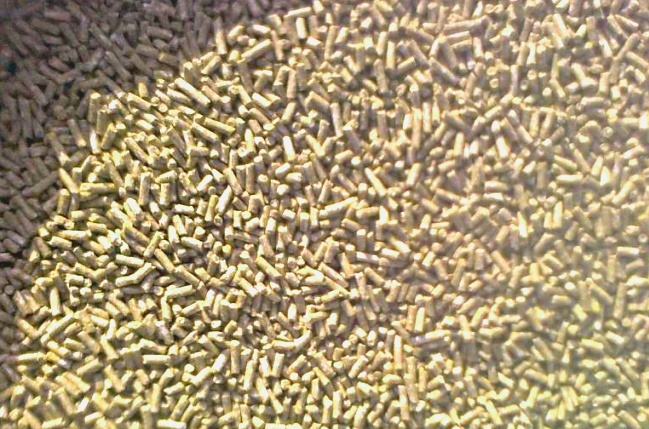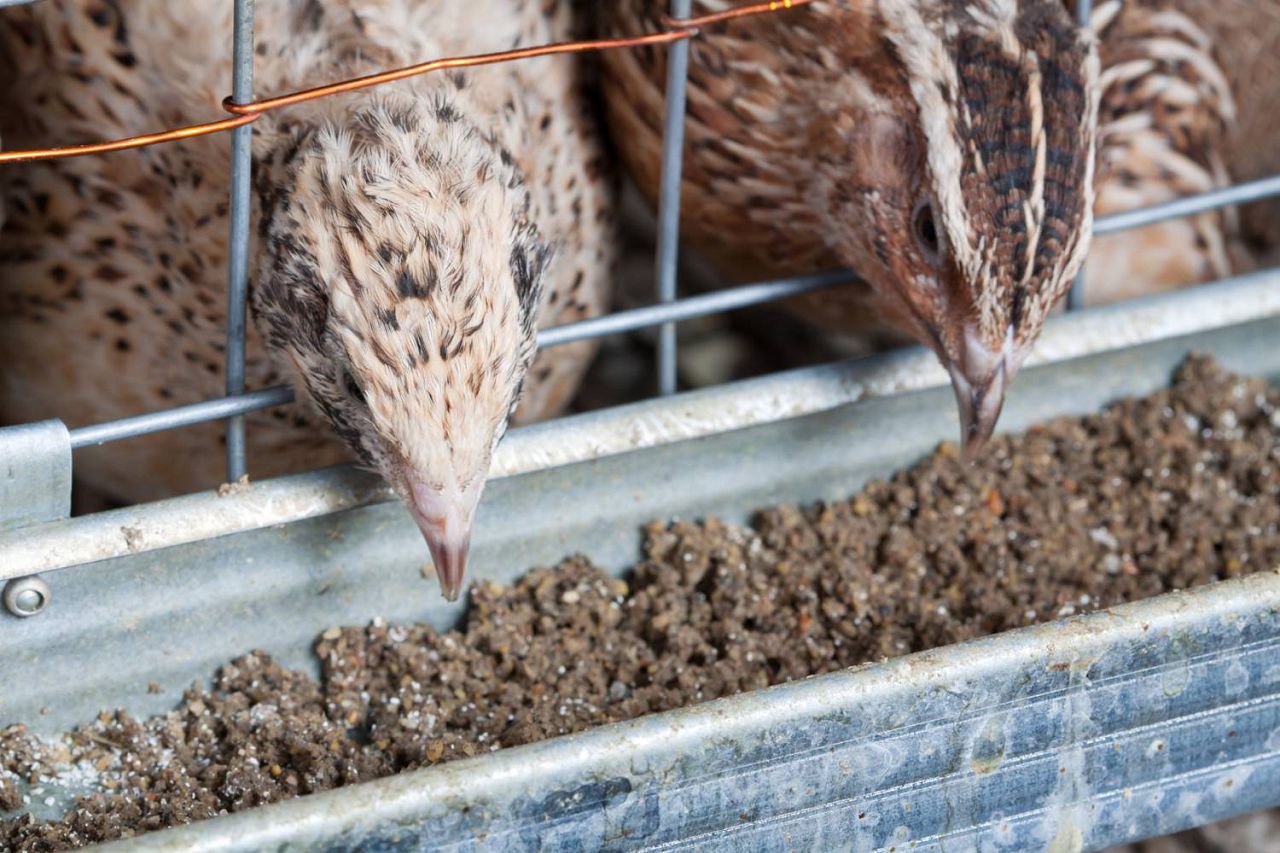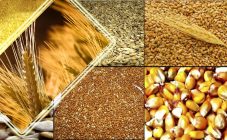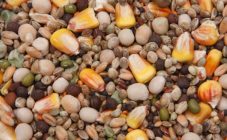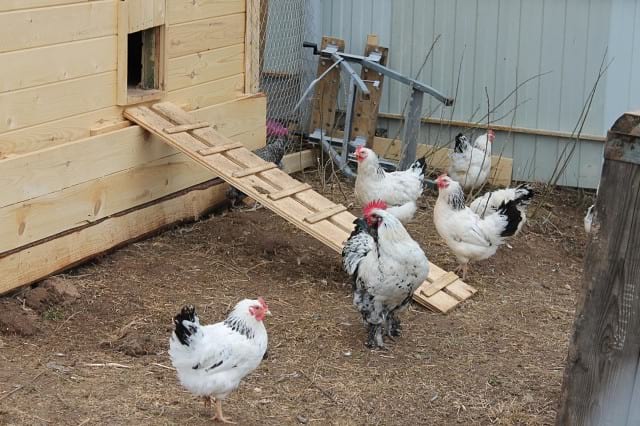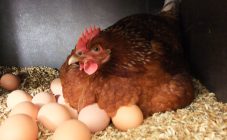Content:
The basis of the diet of chickens is grain, since without them full productivity is impossible. Cereals of different types are supplemented with other products, combined with additives of plant and animal origin to achieve balance. The best option for such a mixture is compound feed for chickens. Complete cereal blends contain the full range of nutrients, minerals and vitamins that laying hens need. Why compound feed is the best option for feeding livestock, how and in what quantity to feed it, how to cook or choose - about all this later.
Rules for feeding laying hens
Keeping and feeding chickens only at first glance seems to be a simple process that everyone can handle. But there are certain norms for feeding chickens, which are based on the results of research on the needs of birds and the characteristics of the functioning of their organisms. Disregard of simple rules leads poultry farmers to the following consequences:
- decreased productivity of layers;
- weight loss;
- slow weight gain in young animals;
- obesity (especially with cellular content);
- delayed puberty;
- egg-laying problems (pecking, thin shells, rupture of the oviduct);
- mortality (large losses among young animals and mature livestock).
There are 3 types of feeding:
- dry;
- wet;
- mixed.
Dry feeding - using exclusively dry grain or combination feed. A convenient option for owners of large farms, poultry farms or simply busy poultry farmers who have no time to prepare fresh food for each feeding. The wet type is distinguished by the use of cereals and mash as the basis of the diet. The mixed type of feeding is optimal for the household, it saves money without losing the quality and balance of nutrients in the feed.
Additional factors affecting diet:
- seasonality (in winter - energy feed, in spring and summer - protein feed with enhanced mineralization);
- type of productivity;
- conditions of detention (cell type - fewer calories);
- age;
- the state of the body (molting, diseases and other nuances).
Taking into account these characteristics and needs of the bird, a ration is drawn up for every day. Knowledge of the intricacies is necessary only when preparing mixtures on your own. When buying ready-made feed, the poultry farmer receives a feed mixture that meets his needs, which can be supplemented with herbs, vegetables or animal products as desired.
Ready mixed feed for laying hens: advantages and composition
The main advantage of industrial feed is that it is ready to serve. Therefore, poultry farmers give preference to them. Compound feed for laying hens has other advantages:
- balanced composition, which includes all the necessary substances for growth, development, productivity;
- the presence of vitamin and mineral supplements;
- optimal shape and size of particles (granules, crushed grain);
- ease of dosage;
- affordable cost.
Ready-made mixtures of industrial production meet the requirements of GOST, so you can safely feed birds of all ages with them, if you choose the right type of product. Despite this, there are various types and price categories of ready-made compound feed.
The use of ready-made food has a good effect on the state of the feathered family. The following results can be observed:
- improved egg production;
- an increase in live weight;
- improved appetite;
- good appearance;
- increasing the percentage of survival in birds of all ages;
- prevention of possible problems in the masonry.
You can start introducing ready-made food into the diet of birds already in the second week of the chicks' life. It is necessary to dose the feed mixture according to age, sex and breed. The norm for each type of productivity is different, but there are average indicators that you can focus on. The table below shows the data on how much compound feed per day is needed for a laying hen, meat-egg and meat breeds.
| Age in weeks | Egg chickens, daily rate in g | Meat and egg chickens, daily rate in g | Meat chickens, daily allowance in g |
| 1-3 | 10-26 | 15-26 | 17-36 |
| 4-8 | 35-40 | 40-45 | 40-60 |
| 9-16 | 55-60 | 60-70 | 70-100 |
| 17-20 | 75-85 | 80-100 | 120-140 |
| 21-27 | 100-110 | 120-140 | 150-160 |
| 28-45 | 130-140 | 140-150 | 170-180 |
| 46-65 | 150-160 | 160 | 150-170 |
Types of compound feed
Manufacturers of feed mixtures present their products in 2 versions:
- bulk feed;
- granular.
Each type has its own advantages and disadvantages. Pellets are good for the following reasons:
- easy to digest;
- reduced feed consumption;
- can be stored for a long time;
- each particle contains a full range of nutrients.
The use of pelleted feed ensures that the maximum nutrients are obtained for each individual. In the case of a bulk product, this is not possible, but this type of feed also has its advantages:
- relatively low cost;
- completely organic composition;
- suitable for young animals.
Mixed feed marking
In industrial production, there are markings for compound feed for laying hens. Each type and its features are detailed in the table.
| Marking | Description and features | Age of application |
| PC-1/1 | Medium fortified feed for peak egg production with a high content of minerals, premixes and proteins. | 20-43 weeks |
| PC-1/2 | Balanced feed in pellet format contains a complex of vitamins and minerals to support the laying. | 43 weeks and older |
| PC-2 | Starter feed for hens from finely ground grain with optimal composition for growth and development. | 1-7 weeks |
| PC-3 | Promotes the development of reproductive function and supports the body of the laying hens at the beginning of laying. Average particle size. | 7-20 |
| PC-4 | Pre-bed feed, alternative to PC-3. | 8-17 |
| PC-5 | Protein feed for the initial stage of broiler feeding. | 1-4 |
| PC-6 | Finishing and growth compound feed for meat breeds and broiler crosses. | From 5 weeks |
Not a single compound feed is able to meet the needs of chickens for greens, animal proteins. These components are separately introduced into the diet, their daily volume should be at least 15-20%, and in the summer period - 20-30%.
The choice of compound feed
The choice of compound feed can be a problem for a novice poultry farmer, as it is difficult to navigate in hundreds of species. Experienced bird keeping specialists identify the leaders in the production of feed:
- Global Agro;
- Cherkizovo;
- Cargill;
- Miratorg;
- RusAgro;
- White bird.
DIY food: recipe and tips
It is not difficult to prepare compound feed with your own hands, but it is important to take into account the percentage of ingredients and mix them according to the recipe, taking into account the proportions. A mash for laying hens, how to cook and how much each component is needed, in the table below.
| Product | Content in% |
|---|---|
| Corn | 40 |
| Barley | 8 |
| Wheat | 20 |
| Sunflower cake | 5 |
| Fish flour | 7 |
| Feed yeast | 3 |
| Powdered milk or whey protein | 2 |
| Herbal flour | 5 |
| Shells or chalk | 5,7 |
| Meat and bone meal | 1 |
| Feed fat | 3 |
| Salt | 0,3 |
The feed should be dosed in accordance with the generally accepted feeding standards for layers. For representatives of meat breeds, the basis (grain) remains the same, but it is worth using additional soybean meal. The chicken mash may vary in composition if using interchangeable ingredients. You can replace barley with oats, as it contains more vegetable protein, use millet, rye, legumes (for meat chickens and broilers).
What to do if the chickens do not want to eat compound feed
A common problem for poultry farmers is that chickens refuse feed and leave full troughs, despite feeling hungry. If the birds are completely healthy, the following steps can be taken to solve the problem.
- gradually transfer to a new mixture;
- use dry mixes for making wet mash;
- wait until the chickens are well hungry;
- transfer to another mixture (change manufacturer, feed type, particle size).
Correctly selected compound feed is the basis of a balanced diet, health and productivity of birds. Good egg production, compliance with growth and development norms, and a minimum mortality rate are the best indicators by which you can determine whether the feed is suitable. Whether prepared at home or purchased from the store, it must fully meet the needs of the hens and provide essential nutrients.

